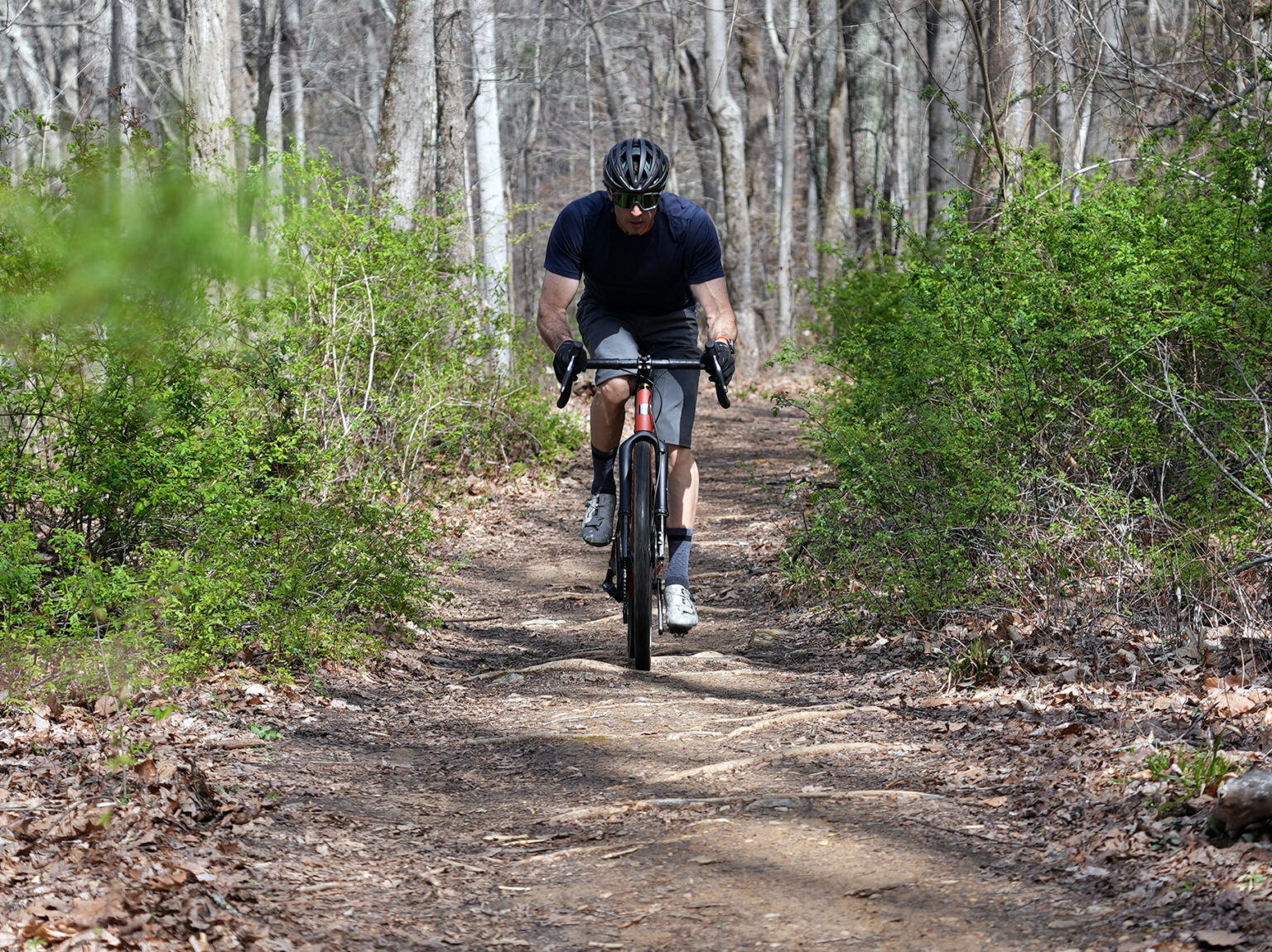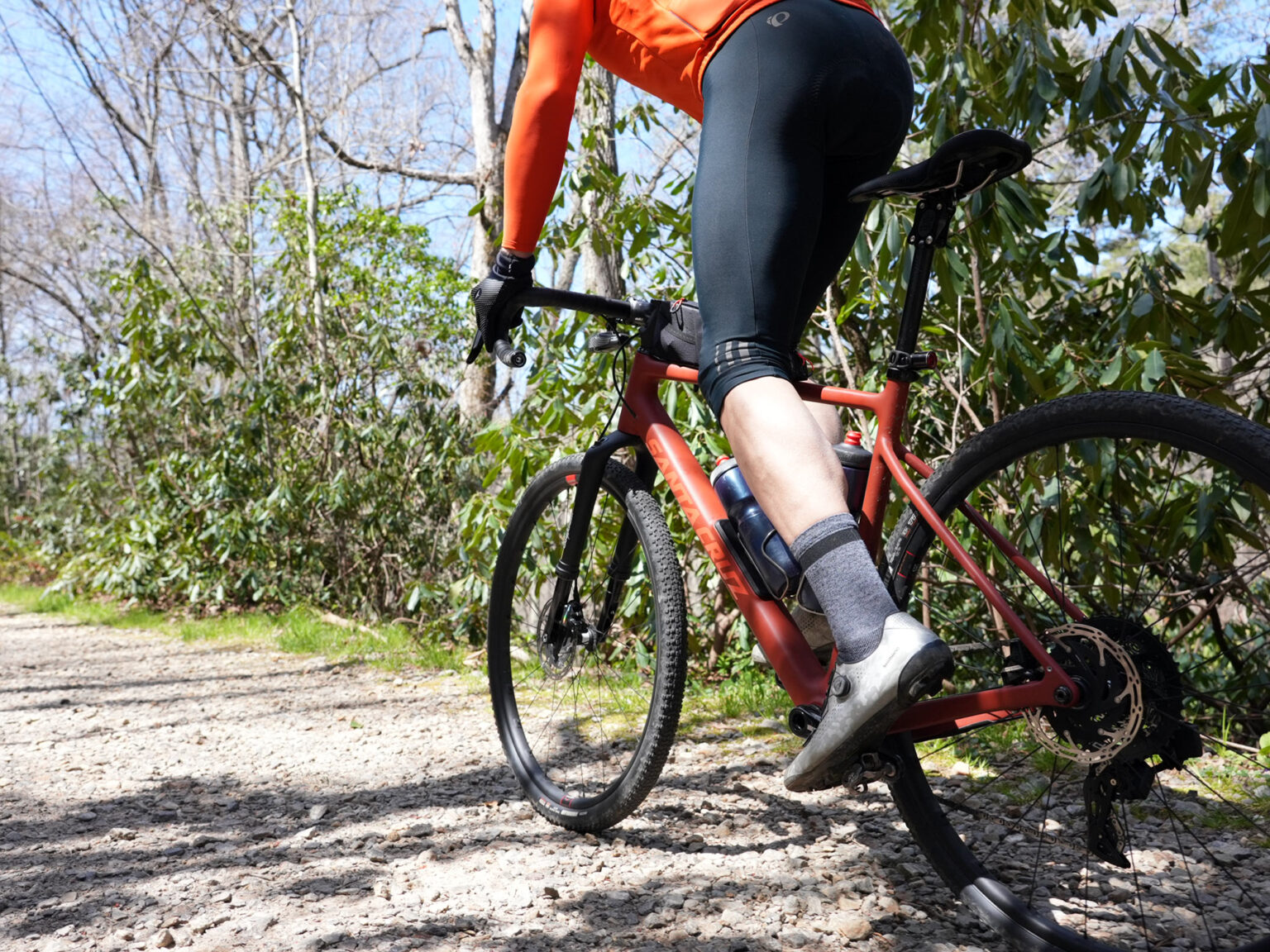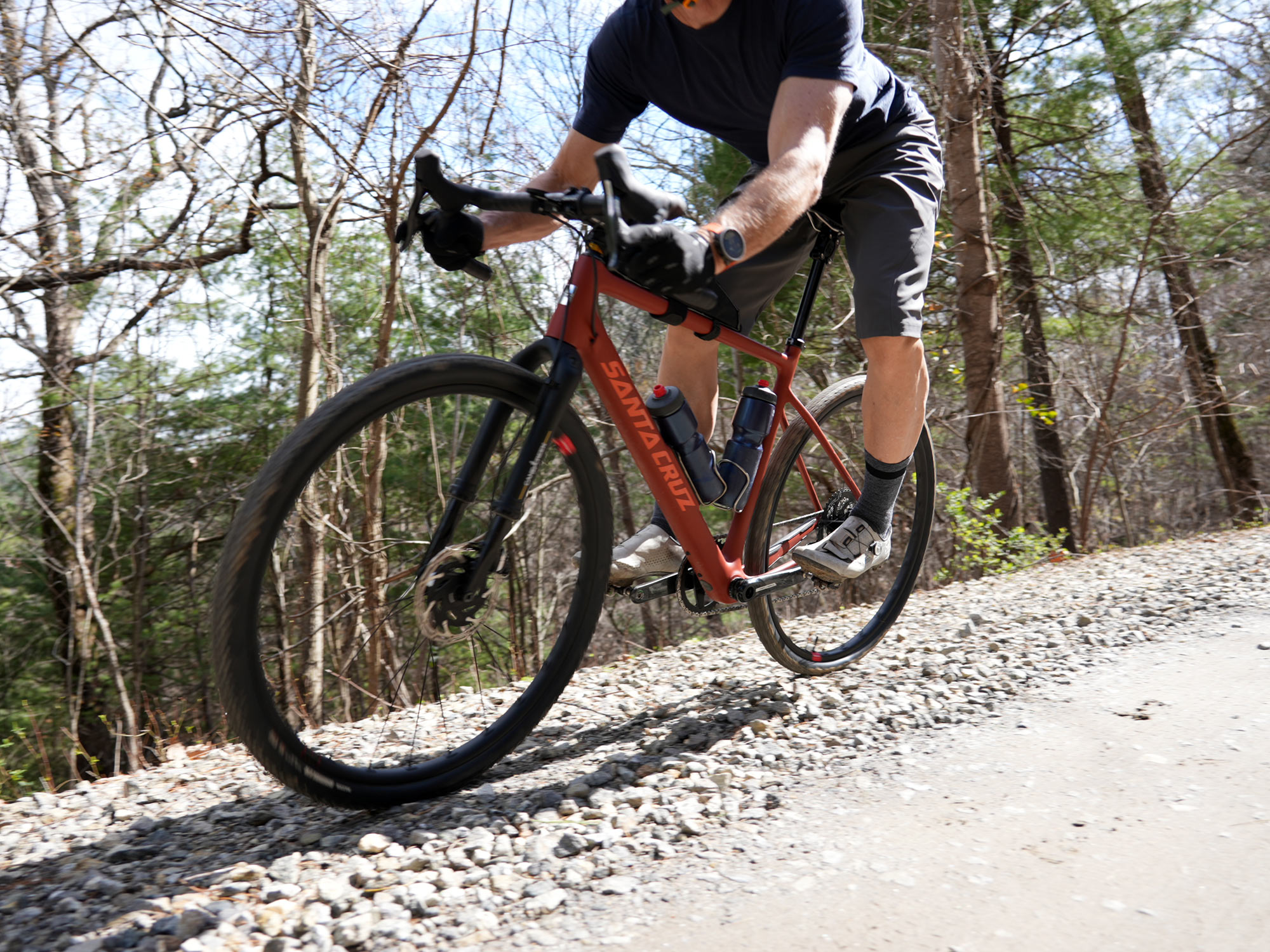The new Cane Creek Invert fork is a truly unique suspension fork with a distinct goal. It’s very light, looks almost like a normal fork, and rides very well. Check my launch coverage for all the tech specs and features.
I spent two long days riding it through Bent Creek and surrounding areas in Cane Creek’s backyard and testing grounds. That said, we were on pre-production forks with a few minor but functionally significant differences from what will go on sale early this summer. I’ll explain below, and this will be a shorter “first impressions” piece that I’ll expand upon later this year once I have a production fork to ride.

The first question many will have is “what about the lack of damping?”
I’d say, for its intended use, it’s no big deal. The fork is smooth, soaking up the undulations between rocks, washboards, and divots common on gravel roads.
It never bounced back uncontrollably, nor did it blow through the travel and bottom out. Setting your air pressure in the right range will be key to balancing that and giving it the right compression control by way of how the air spring naturally ramps up.
Rebound will be quick, but with just 30-40mm of travel, there’s simply not enough of it to pogo you out of control. I never felt it bounce off impacts and lose traction, either. Basically, it felt fine, and I appreciated the lightweight more than I missed any damping.

The Invert wants to be the fork that’s purely for gravel roads, not hitting the singletrack. We hit a few very smooth trails with some roots, like what’s shown above, and it worked great for that. Think “flow trail” and you have the right idea of the upper limits of what the Invert will be good at.
Anything super chunky would bring you into the realm of wanting a properly damped fork. But that’s not what the Invert is designed for, so choose your horse for the course.

The inverted design and sleek crown shaping gives the Invert incredibly good looks, too. There’s nothing about it that screams, or even murmurs, it’s a suspension fork.
Three of us were riding, all on maroon Santa Cruz Stigmatas on Bent Creek when another random rider came up behind us on the same exact bike (but with the stock, color-matched rigid fork) and commented on our “nice bikes”. He rode next to us, chatted for a bit, then motored on ahead. He didn’t notice the forks.
Cane Creek said they walked a bike with it through last year’s Unbound pits and even raced on it and maybe three people noticed. It’s that stealthy. If aesthetics have been your stumbling block, you can give up on that argument.

Even standing to climb revealed very little pogo effect. Maybe it’s 10% more than a typically damped fork, but the Invert also felt a little more supportive because its relying solely on the air spring. So, in my opinion, it’s a wash, and again I’d take the weight savings.
The only time I really noticed a lack of damping was when pulling up hard on the fork to bunny hop an obstacle. The fork rebounds at full speed and I can hear and feel the top out. Considering I did that only a few times over two days, it’s not that big a deal to me, but it’s definitely noticeable.
As for the preproduction issues, here’s the deal. Production forks will have a harder, smoother anodization on the lowers, and the lower seals will fit better. Our test forks’ lower seals were too tight and, combined with the lowers’ finish, caused noticeable stiction. This was particularly noticeable on the “parking lot test” of just standing over the bike and pressing down on the fork.
Cane Creek has since received and ridden production parts and say they’re much more plush. Considering how much I liked the fork as tested, and how little that stiction seemed to impact performance once we were actually riding, I’m excited to get on the final versions. I’ll update this post with a long-term review after I get time on it.
